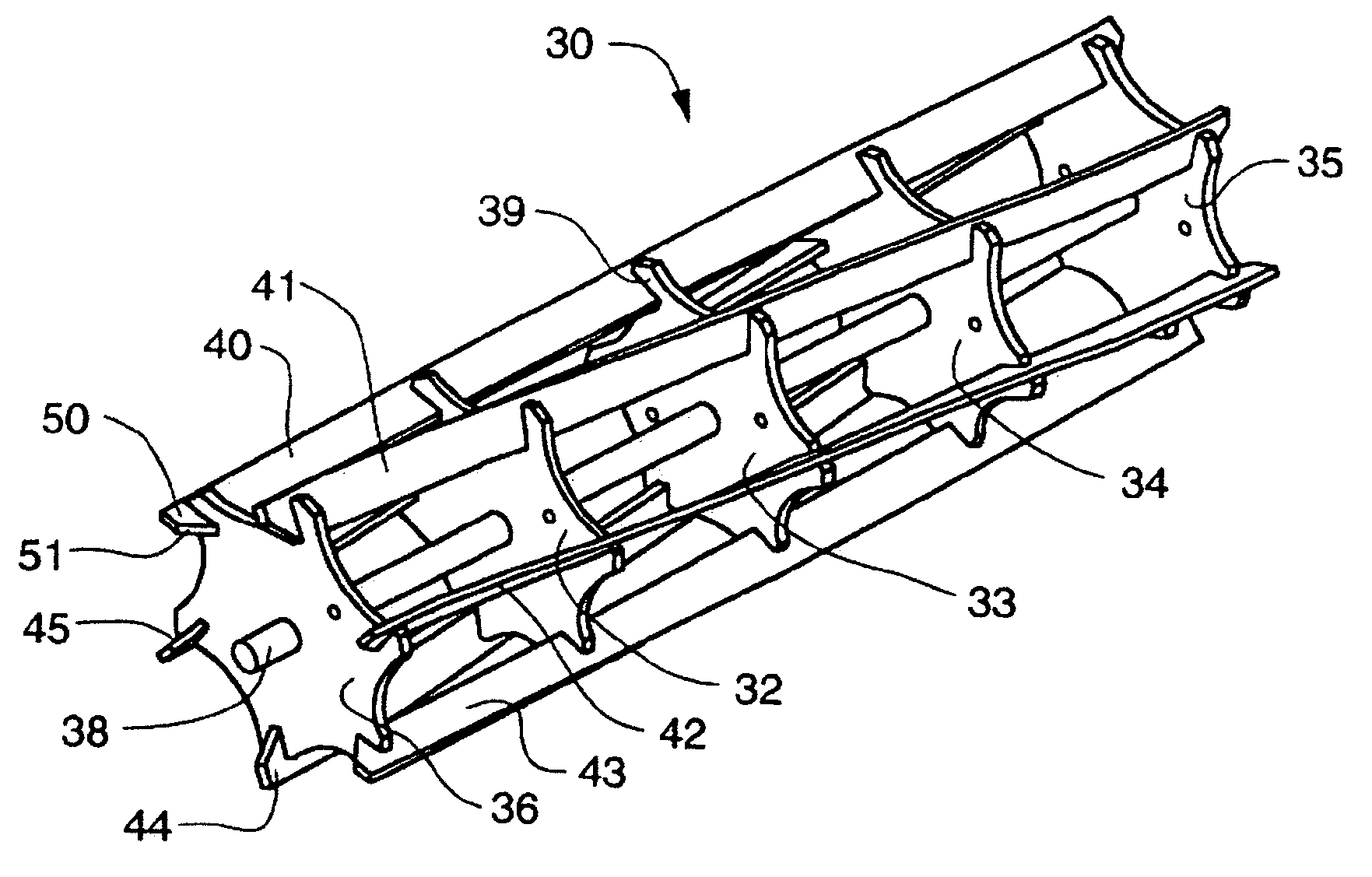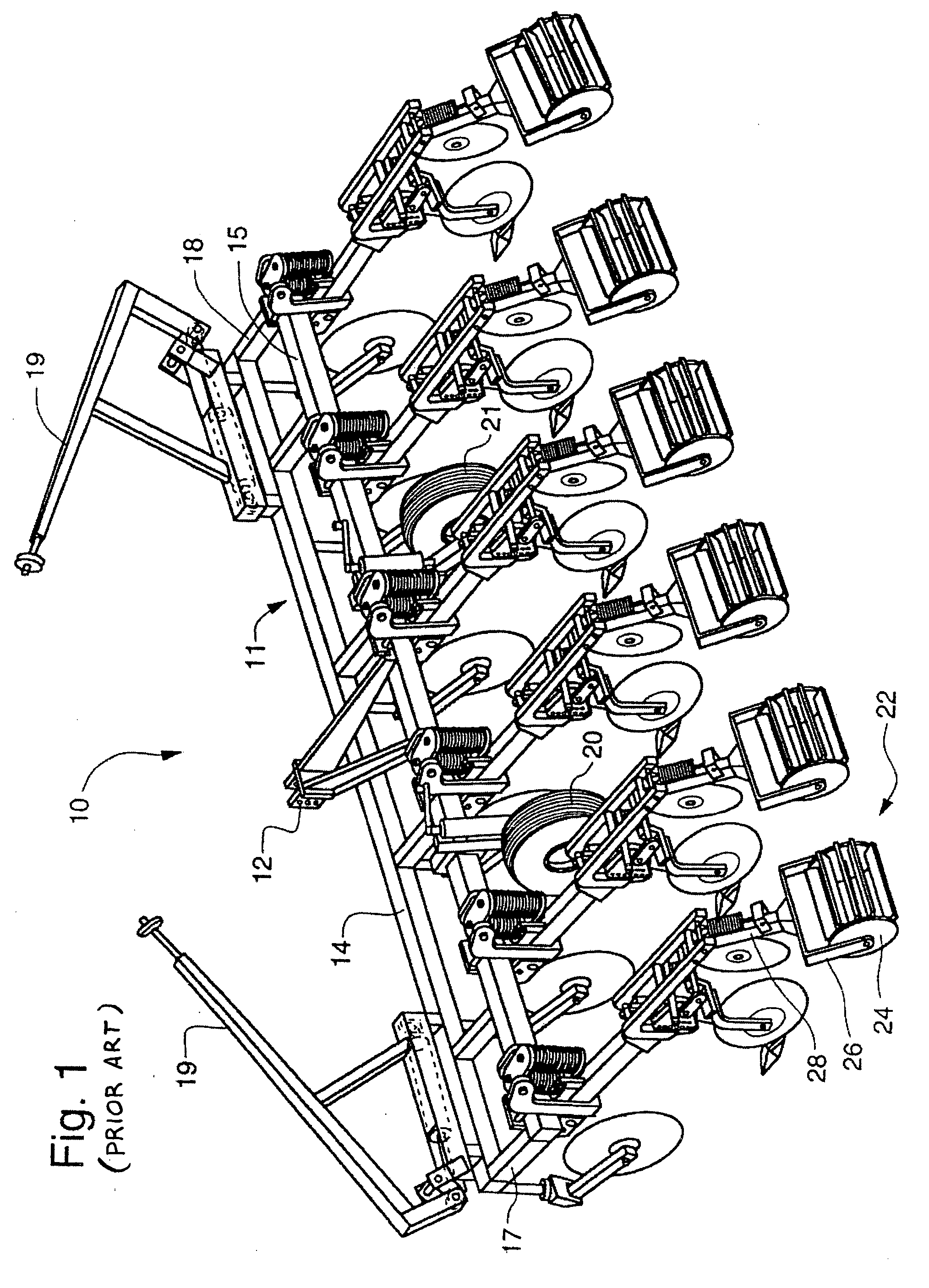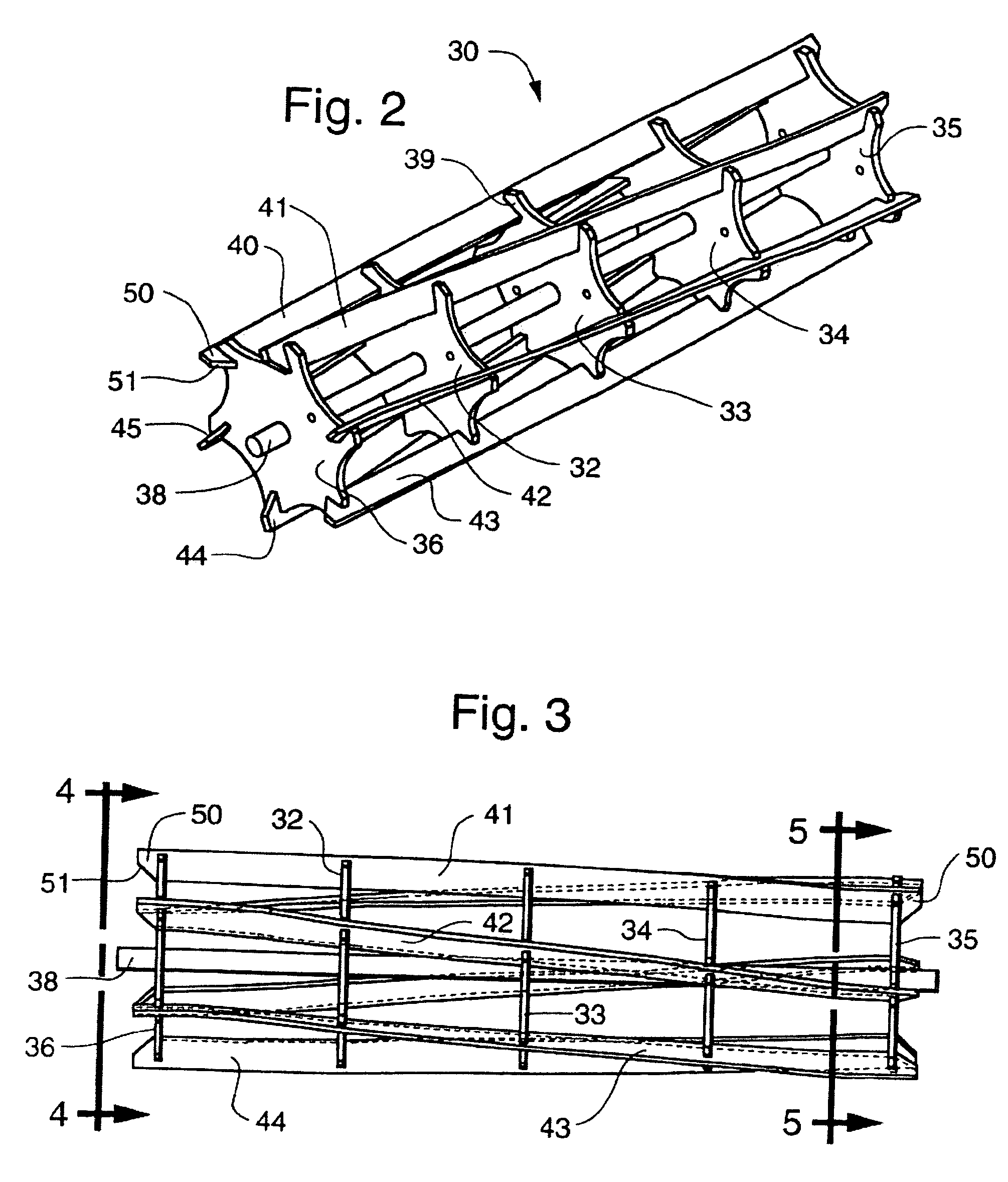Soil conditioning rotary reel
a rotary reel and soil conditioning technology, applied in the field of agricultural tillage and seedbed preparation equipment, can solve the problems of poor soil conditioning effect, so as to improve the seed-to-soil contact, improve soil conditions, and improve yield
- Summary
- Abstract
- Description
- Claims
- Application Information
AI Technical Summary
Benefits of technology
Problems solved by technology
Method used
Image
Examples
Embodiment Construction
[0026] In the following description, right hand and left hand references are determined by standing at the rear of the machine and facing in the direction of forward travel. Also, in the following description, it is to be understood that such terms as “forward,”“left,”“upwardly,” etc., are words of convenience and are not to be construed as limiting terms.
[0027] Referring now to FIG. 1, reference numeral 10 generally designates an exemplary primary tillage system or implement including a soil conditioning rotary reel. Implement 10 includes a main frame generally designated 11 that is adapted to be attached at its front to the rear of an agricultural tractor (not shown) by means of a conventional 3-point hitch 12. Larger main frames incorporate foldable toolbar wings for reduced transport widths. Frame 11 is a substantial structure intended to withstand significant operational forces and to maintain its integrity for many years of reliable service. Two generally parallel and coexten...
PUM
 Login to View More
Login to View More Abstract
Description
Claims
Application Information
 Login to View More
Login to View More - R&D
- Intellectual Property
- Life Sciences
- Materials
- Tech Scout
- Unparalleled Data Quality
- Higher Quality Content
- 60% Fewer Hallucinations
Browse by: Latest US Patents, China's latest patents, Technical Efficacy Thesaurus, Application Domain, Technology Topic, Popular Technical Reports.
© 2025 PatSnap. All rights reserved.Legal|Privacy policy|Modern Slavery Act Transparency Statement|Sitemap|About US| Contact US: help@patsnap.com



